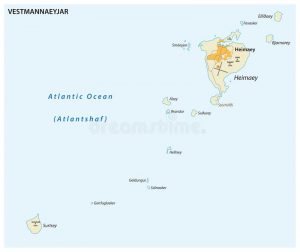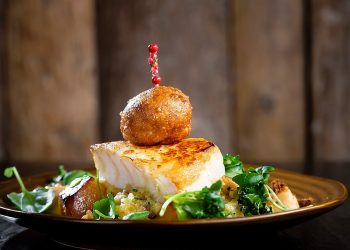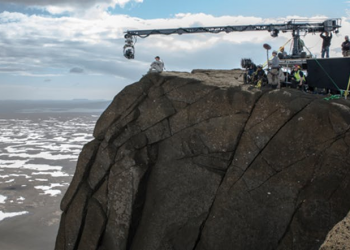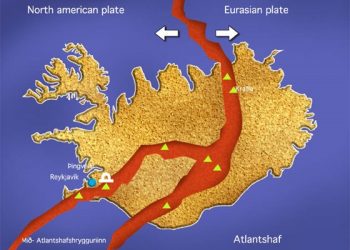Surtsey is Iceland’s youngest volcanic island
“Surtur comes from the South… the hot stars down from Heaven are whirled. Fierce grows the steam and the life-feeding flame, until fire leaps high about Heaven itself.”
From the Icelandic poem Völuspá, ca. 950 A.D.
Named after the Norse fire god Surtur, Surtsey (Surtur’s island) is one of the world’s newest islands. In November 1963, Surtsey was formed in a volcanic eruption which heaved it up out of the waters 18 km (11 mi) south-west of Heimaey; 32 km (20 mi) off the south coast of Iceland. When the eruption first occurred, columns of ash were sent almost 9,146 m (30,000 ft.) into the sky and could be seen on clear days as far away as Reykjavík (Reykjavik).
The birth of Surtsey took almost four years as eruption followed eruption until 1967, by which time the island stood 150 m (492 ft) above sea level and covered an area of almost 3 square kilometres (2 square miles). Despite the considerable amount of early erosion caused by the pounding seas, the island core quickly solidified as rock and it now holds its own, under close scientific observation.
Surtsey is one of the most filmed and researched islands, and one of the most restricted. Ever since its creation, the island´s progress has been studied by volcanologists, botanists and biologists. Surtsey is giving scientists a unique and fascinating insight into how a new island develops, how flora and fauna evolve; how life colonizes new land. Because of the need to allow natural processes to evolve without human interference, very few people are allowed to land on the island. Special permits are only granted for scientific research. For the rest of us, Surtsey can be seen off the south coast, south west of the Vestmannaeyjar (Westmann Islands), in fine weather.

Flora and fauna on Surtsey
Birds began nesting on Surtsey three years after the eruptions ended. Eighty nine species of birds have been recorded, of which 57 breed elsewhere in Iceland. Fulmar and guillemot were the first species to set up home, while many species are now regularly found on the island, including the Atlantic Puffin. Sightings of the Golden Plover have also been reported. Many marine and submarine species are now well established, including Grey and harbour seals. Mosses and lichens and some higher forms of land life are also colonising the soil of Surtsey.
In 2008, Surtsey was inscribed on the UNESCO World Heritage List, as an outstanding example representing significant ongoing ecological and biological processes. Because Surtsey has been legally protected from its very formation, it provides a pristine natural laboratory which will continue to afford invaluable insights on the processes of biological colonisation. Surtsey is also part of the World Heritage Marine Programme.
The undersea vents that produced Surtsey are part of the Vestmannaeyjar submarine volcanic system, which is part of the Mid-Atlantic Ridge sea floor fissure. Following the end of the eruption, scientists established a grid of benchmarks against which they measured the changes in the shape of the island. The measurements have since revealed that almost half of the island´s original area has been lost, due to erosion.
A weather station for weather observations and a webcam are installed on Surtsey.







